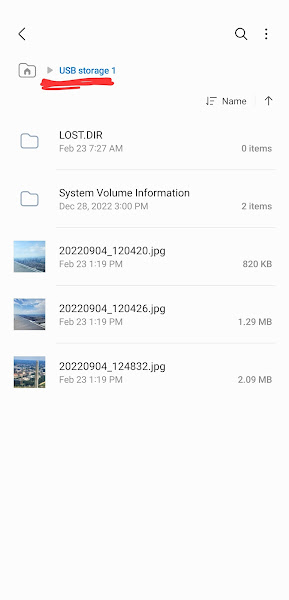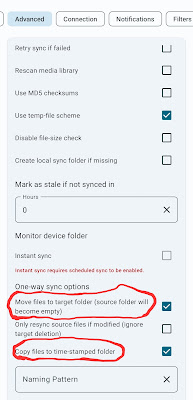But Why?
I love the idea of downloading a large area's worth of USGS maps,
dropping them on a Micro SD card, and keeping them in my 'back
pocket' for unexpected use. Sure, Google and Back Country
Navigator's offline map support is more elegant and optimized, but
the there's just something reassuring about having an offline
catalog at your fingertips.
Getting and downloading maps in bulk is easy enough to do. For example, I can
ask my USGS
command line tool for all the maps that define Virginia:
$ usgsassist -a topos -l "Virginia, USA" | wc -l
1697
The problem is that each map is about 50 megs. I confirmed this by
looking at the 4 maps that back Richmond, VA:
$ wget $(usgsassist -a topos -l "Richmond, VA" | cut -d'|' -f3)
...
$ ls -lh
total 427440
-rw------- 1 ben staff 53M Sep 23 00:20 VA_Bon_Air_20220920_TM_geo.pdf
-rw------- 1 ben staff 56M Sep 17 00:17 VA_Chesterfield_20220908_TM_geo.pdf
-rw------- 1 ben staff 48M Sep 23 00:21 VA_Drewrys_Bluff_20220920_TM_geo.pdf
-rw------- 1 ben staff 51M Sep 23 00:22 VA_Richmond_20220920_TM_geo.pdf
Multiplying this out, it will take about 84 gigs of
space to store these maps. With storage space requirements like
these, I'll quickly exhaust what I can fit on a cheap SD card.
This begs the question: can we take any action to reduce this disk
space requirement? I think so.
But How?
Inside each USGS topo is an 'Images' layer that contains the
satellite imagery for the map. By default, this layer is off, so it
doesn't appear to be there:
But, if we enable this layer and view the PDF, we can see it:
$ python3 ~/dt/i2x/code/src/master/pdftools/pdflayers \
-e "Images" \
-i VA_Drewrys_Bluff_20220920_TM_geo.pdf \
-o VA_Drewrys_Bluff_20220920_TM_geo.with_images.pdf
My hypothesis is that most of the 50 megs of these maps go towards
storing this image. I rarely use this layer, so if I can remove it
from the PDF
the result should be a notable decrease in file size and no change in functionality.
But Really?
To test this hypothesis, I decided I'd extract the image from the
PDF. If it was as hefty as I thought, I'd continue with this
effort to remove it. If the file isn't that large, then I'd stop
worrying about this and accept that each USGS map is going to
take about 50 megs of disk space.
My first attempt at image extraction was to use the
poppler PDF tool's
pdfimages
command. But alas, this gave me a heap of error messages and didn't
extract any images.
$ pdfimages VA_Bon_Air_20220920_TM_geo.pdf images
Syntax Error (11837): insufficient arguments for Marked Content
Syntax Error (11866): insufficient arguments for Marked Content
Syntax Error (11880): insufficient arguments for Marked Content
Syntax Error (11883): insufficient arguments for Marked Content
...
Next up, I found a useful snippet of code in this
Stack
Overflow discussion. Once again,
PyMuPDF was looking like it was
going to save the day.
I ended up adapting that Stack Overflow code into
a custom
python pdfimages script.
When I finally ran my script on one of the PDF map files I was
surprised by the results:
$ python3 ~/dt/i2x/code/src/master/pdftools/pdfimages -i VA_Drewrys_Bluff_20220920_TM_geo.pdf -o extracted/
page_images: 100%|██████████████████████████████████████████████████████████████████████████████████████████████████████████████████████████████████████████████████████████████████████████████████████████████████████████████████████████| 174/174 [00:18<00:00, 9.51it/s]
pages: 100%|████████████████████████████████████████████████████████████████████████████████████████████████████████████████████████████████████████████████████████████████████████████████████████████████████████████████████████████████████| 1/1 [00:18<00:00, 18.31s/it]
$ ls -lh extracted/ | head
total 361456
-rw------- 1 ben staff 1.0M Feb 8 07:22 VA_Drewrys_Bluff_20220920_TM_geo_p0-100.png
-rw------- 1 ben staff 1.0M Feb 8 07:22 VA_Drewrys_Bluff_20220920_TM_geo_p0-101.png
-rw------- 1 ben staff 1.0M Feb 8 07:22 VA_Drewrys_Bluff_20220920_TM_geo_p0-102.png
-rw------- 1 ben staff 1.0M Feb 8 07:22 VA_Drewrys_Bluff_20220920_TM_geo_p0-103.png
-rw------- 1 ben staff 1.0M Feb 8 07:22 VA_Drewrys_Bluff_20220920_TM_geo_p0-104.png
-rw------- 1 ben staff 1.0M Feb 8 07:22 VA_Drewrys_Bluff_20220920_TM_geo_p0-105.png
-rw------- 1 ben staff 1.0M Feb 8 07:22 VA_Drewrys_Bluff_20220920_TM_geo_p0-106.png
-rw------- 1 ben staff 1.0M Feb 8 07:22 VA_Drewrys_Bluff_20220920_TM_geo_p0-107.png
-rw------- 1 ben staff 1.0M Feb 8 07:22 VA_Drewrys_Bluff_20220920_TM_geo_p0-108.png
$ ls extracted/ | wc -l
174
Rather than extracting one massive image, it extracted
174 small ones. While not what I was expecting, the
small files do add up to a significant payload:
$ du -sh extracted
176M extracted
Each of these image files is one thin slice of the satellite
photo. Here's an example:
I find all of this quite promising. There's over 170 Megs worth of
image data that's been compressed into a 50 Meg PDF. If I can remove
that image data, the file size should drop significantly.
Next up: I'll figure out a way to remove this image data, while still
maintain the integrity of the map files. I'm psyched to see just how
small these file can be!











































